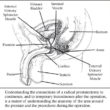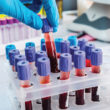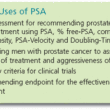Targeting Cancer on a Different Level: The Tumor Microenvironment
The tumor microenvironment is the tissue area surrounding a malignant tumor: tissue, blood vessels, immune cells, and molecules. Cancer cells develop in this environment, often because tumor cells’ growth overpowers immune cells. Scientists are examining this area closely to come up with new ways to fight prostate cancer.

To find big discoveries, research sometimes needs to start small.
If prostate cancer spreads outside of a patient’s prostate and into the tumor microenvironment, he will often have hormonal therapy (also known as androgen-deprivation therapy or ADT) to slow or stop the spread of the disease. However, most men will eventually develop resistance to the hormonal therapy and the tumor will begin to grow again. This puts him at greater risk for more disease spread, unless an alternate treatment can be successful, such as chemotherapy, radiation, or new promising approaches currently under development.
Interactions in the tumor microenvironment lead to treatment resistance
Research is beginning to show that prostate cancer patients’ resistance to hormonal therapy may be caused not only from the tumor itself, but from interactions occurring in the microenvironment around the tumor.
For example, a team at Memorial Sloan Kettering Cancer Center found a protein called NRG1 in the microenvironment of certain prostate cancers. NRG1 activates another protein, called HER3, that allows cancer cells to circumvent the hormone- blocking actions of hormonal therapy, and therefore the cancer begins to spread.
Looking closely at the tumor microenvironment and considering the way proteins interact provides a better picture of where to target cancer treatments.
The research team thinks that the NRG1 and HER3 protein interaction could be a potential future target for treatment in men with prostate cancer.
Blocking protein interactions could prevent treatment resistance
Breast cancer drugs often target HER3 and another protein, HER2, but these treatments been ineffective in treating prostate cancer thus far.
However, since the NRG1 protein stimulates HER3, the researchers think that blocking the NRG1 protein will lead to less of the HER3 protein, and therefore the tumor would be less resistant to hormonal therapy. One experimental antibody with this targeted approach has already shown some success in laboratory use.
While this approach is not yet ready to use in patients, studies such as this are the starting point to developing personalized treatments for men with prostate cancer.



















